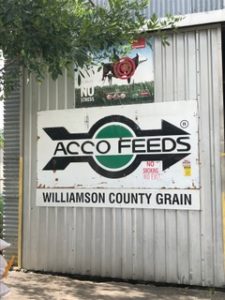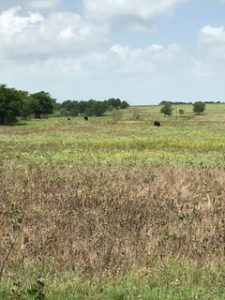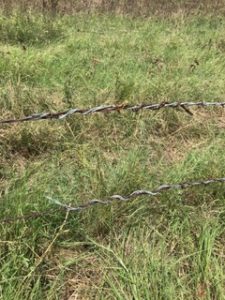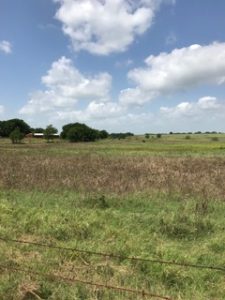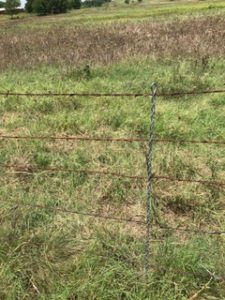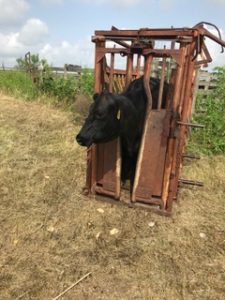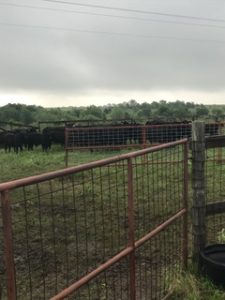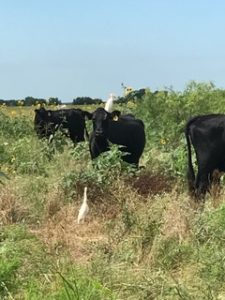Last week I went with Ryan down to the interim USDA complex in Georgetown, while the offices are being renovated, to pay a visit to the Williamson County FSA and turn in crop reports. During the office visit I had a chance to walk over to the NRCS extension office and chat with the resident natural resources manager as well as the district soil conservationist. I let them know that I was interested in a career with NRCS, and we had a great talk about ways to get involved as well as the benefits associated with a job as a soil scientist or soil conservationist. I left with a valuable contact in Temple, TX whom I definitely plan on giving a call to hopefully set up an in-semester student trainee program.
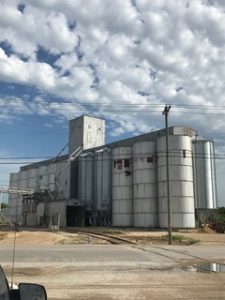
A little bit later in the week, we picked up more mineral and molasses to distribute to the three herds. We also worked the Brangus herd at “four corners” to deworm, fly tag, and vaccinate each cow before culling last season’s calves to haul to auction at the sale barn in Cameron. Parker and Bobby dropped off the mobile squeeze chute in the corral the day before we penned up the herd. To pen them up, Bobby brought them up with some cotton seed on the back of the Polaris. I drove the Frontier to push the herd into the corral while Bobby kept any stragglers from cutting back.
For only working the herd with three men, we were pretty efficient once we nailed down a system to alternate between cutting the next group into the holding pen, and running the current group down the alley. It took all three of us to make any progress cutting the groups, but we were able to divvy up the jobs once we had a group running. Parker worked the head gate on the squeeze chute and vaccinated, while Bobby poured on the dewormer, and I cut the old fly tags out to replace them. We had as much of the herd worked and turned back out to pasture as we could without overheating or overstressing the cow-calf pairs, before lunch. Parker and I went with Bobby to take the remaining calves to sale later in the afternoon. The next day we rotated the four corners herd again to keep them on ample grazing.
Towards the end of the week, we had to take a day to put a stretch of the fence-line back up over on county road 424, where we’re currently
keeping the “heifer herd.” It had previously been knocked down by a presumably drunk driver some time earlier. All it took was driving in t-posts in place of the wo
oden posts that were taken out by the car, removing the old stays to untangle the strands, stretching and splicing the broken wires, stapling and clipping the wire back to the posts, and putting in new stays to raise up and keep tension on the stretch of fence we put back up.
In other news, the chickens have started laying more eggs than we can eat despite the fact that I can and often do eat as many as four to six a day; so, Parker and I have been enjoying our fill of farm fresh eggs for a few days now.”
Respectfully,
Summer Farm Intern
Cody Garcia ’21 | PSSC | TGSC
College of Agriculture
Texas A&M University | Corps of Cadets
Squadron 23


